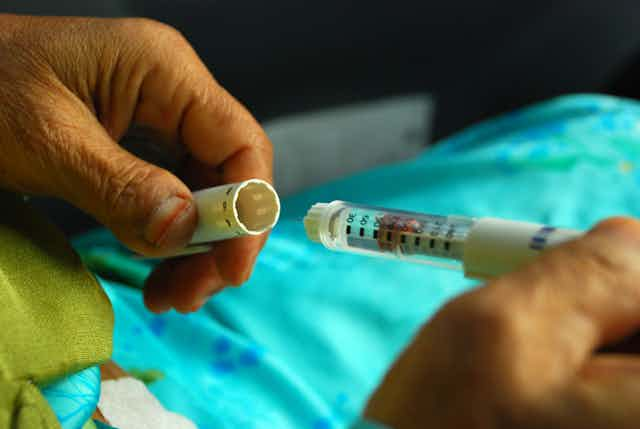Biologics are medicines that are made using certain types of cells to produce the right kind of protein. They can also be constituted from many different things in our body, such as RNA/DNA or hormones. These components are then – for the most part – injected into the body because they would be destroyed in our digestive system.
Starting with insulin three decades ago, biologics have become the fastest-growing class of therapeutic compounds. About 300 biologics are now available for human use. These compounds are widely accepted as the most effective means of treating certain diseases, including cancer and rheumatoid arthritis.
Indeed, the demand for biologics is growing exponentially due to their ability to bind to specific cells, which means they have fewer side effects than broadly acting drugs. The chemicals traditionally used in cancer therapy, for instance, bind to every fast-dividing cell because this is a hallmark of cancer cells, but this results in observed side effects such as hair loss. Biologics are better at targeting cancerous cells.
Sales of biologics are expected to exceed AUS$300 billion annually by 2019, but only a small number of best-selling compounds generate most of this revenue. The most popular are known as monoclonal antibodies (mAbs), which are used to treat cancer and chronic inflammatory diseases (although many mAbs are in clinical trials as therapeutic agents for many other diseases). These are the single most widely used class of biologics with annual growth of approximately 10%.
Enter biosimilars
About half of the biologics on the market are about to have their patents expire. This presents an opportunity to develop generic versions (biosimilars) and better therapeutic proteins (biobetters) from these 20-year-old agents.
But developing and producing any biotherapeutic agent is challenging and very costly. This is due to the complex processing steps involved, the many degradation pathways the candidate product can fall into (its chemical structure can change easily, for instance) and the range of regulatory requirements that must be satisfied each time they are approved for use in a jurisdiction.
Biosimilars will help reduce the cost of some of the most expensive biologics on the market. But this can only be possible with the early engagement of all parties involved: academics, industry, regulatory agencies and also patient representatives. The latter group’s involvement is a must because the public and clinicians who prescribe such medicines should be satisfied that a biosimilar could replace the expensive brand–name drug.
Although recent recommendations published by the regulatory agencies around the world pave the way for rapid development and approval of biosimilars, so far only a few have actually been approved. One of the reasons for this slow uptake is vague guidelines for biosimilars, such as “high similarity” to or “no clinically meaningful differences” between it and the original biologic drug. This lack of specificity puts constraints on the development of biosimilars.
Blocks for development
Those developing biosimilars need to show regulatory agencies that their product is similar to the established biologic. To do this, scientists often need to “characterise” or describe biosimilars more than the original biologic was. And that requires extensive analysis and description of the potential drug.
This need for extra description stems from the fact that certain characteristics of the biologic may not have been thought to be important when the originator drug was first developed. But since we need to ensure that biosimilars actually behave similarly to brand-named drugs and that there are no downstream effects on the product’s integrity (it doesn’t break down or aggregate, for instance), a whole new raft of information becomes important.
Another reason is so we can ensure that the biosimilar and the originator product show similarities at every level. Preparing an identical copy of a biologic is very difficult – if not impossible – as living organisms are utilised to produce proteins, and there are always other chemicals involved in the formulation.
Small variations between brand-named and biosimilar medications will always exist; this is one of the main reasons for the stringent requirements for demonstrating “similarity”. But the long-term behaviour of a biosimilar should be similar to that of the originator drug to satisfy regulatory demands. Luckily, newly developed rapid analytical methods are able to show similarities as well as differences between the brand–named drug and the biosimilar.
We are in a new era of drug development, and more biologics will undoubtedly be on the market soon. And as more biologics come off patent, we will also see more biosimilars emerging.

